Growing Tall Bearded Irises in Wet Conditions
Weather Conditions
The weather over the winter has been extremely wet in many parts of the country where the ground is still sodden. It is important to understand why growing Tall Bearded Irises in Wet Conditions can both be tricky and also fatal to your plants. Understand why you need get on top of your work with irises, and do so quickly. The steps necessary are listed in priority order:
1) Weeds
Weed growth has been spectacular over a winter that has been largely mild, but extremely wet. These are ideal conditions for vigorous perennial weeds. I have spent the last week on my hands and knees weeding irises. It is really important to remove as many of the perennial weeds as you can at this point in they year, and it will save valuable time later. Word of caution, you need to be extremely careful not to snap iris shoots that will form spikes in the next six weeks. Extreme care is necessary!
2) Remove all brown leaves form the base of your irises
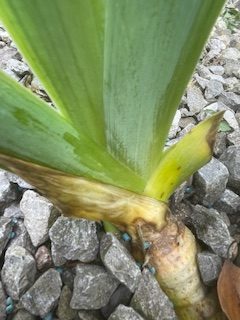
Another job that is best done on your hands and knees! Good plant hygiene is as important as ever, but particularly so in recent wet conditions. Take care to remove all the old brown leaves at the base of each rhizome carefully and cut back any discoloured leaves. This work is fiddly and best done with a stout sharp knife and sharp secateurs.
If your plants are clean, this will reduce the likelihood of leaf spot later, another condition that is more prevalent in damp conditions. Again be careful, this work is tricky at the best of times, but particularly difficult when the irises have started to develop flowering material.
3) Discoloured Leaves
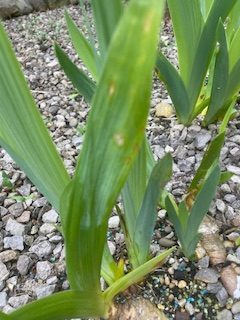
It is essential to cut back leaves that are brown, discoloured , or show any sign of leaf spot. Cut back to clean green leaf material and be diligent in the way you do this. Again, damp wet conditions with rising temperatures are perfect conditions for leaf spot. There are anti -fungal remedies, but please contact us for further information.
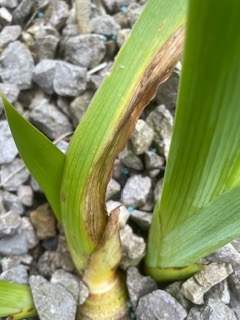
4) Cutting Back Old Rhizomes
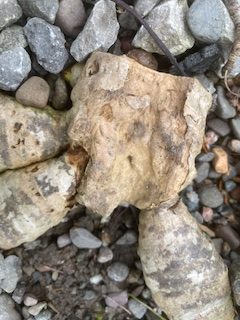
After you have tackled the weeds, do remember that there is still time to cut out any old rhizomes. However this comes with a word of warning, and with new plant growth ever more vigorous, extreme care is needed not to snap choice flowering material in the process.
At the same time it is well worth checking the health of the rhizomes as the sodden ground can definitely increase the likelihood of rhizome rot. It is important to cut out any rhizomes that are soggy/soft; this will prevent the spread of rot and may well save your plants.
Do remember that irises are generally tough as nails, but they are particularly susceptible to rot in ground that is sodden. Conditions for rot are ideal and have been so during the last six months.
5) Tidying Up/Iris Division
Always be alert to the possibility of iris division. Little and often is best using the Doddington Method, and if you want to do something this Spring, you still have time, but be sparing and save your best efforts until after your irises have flowered. Probably still viable in the north where you have a little more time.
6) Feed your Irises
Finally, it is still not too late to get the bonemeal on before the irises flower in May/June. And, if you have not done this already, you should get cracking and be generous with a good handful per iris clump, and more if the clumps are large. It is important to work the bonemeal into the ground around each plant which is another reason why the weeding needs to be done first.
Where foxes are a problem remember that a granular seaweed feed worked into the ground is an effective alternative.
7) Slugs
No iris planting ‘do’s and don’ts’ is ever complete without a slug/snail warning. Again, recent wet mild conditions have meant that slugs have been active for some time. If you have followed the earlier steps, you will be aware whether damage is evident or not and I again make no apology for repeating my warning verbatim.
These soggy warm conditions are ideal for slugs. You need to be vigilant, and remember it is the small black slug that does most damage.
If slugs are evident (and remember you may not be aware that they are), use an organic product ‘Ferrimax’ approved by RHS or ‘Sluxx’, the product we use. Check websites for availability.
8) Summary
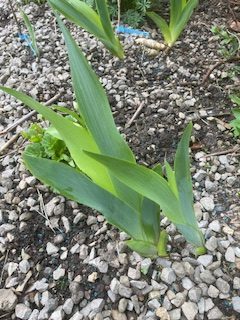
Wet Conditions All Shipshape
Growing Irises in Wet Conditions is not straightforward. There are things you must do to ensure that your bearded irises stay healthy. Normally, bearded irises are tough as nails and will last for years. Sodden ground and persistent rain experienced over the last four/six months provide ideal conditions for iris rot, the main killer of bearded irises.
Sign up for future advice
We send out twice-yearly newsletters or when conditions are particularly challenging. If you would like to receive these please subscribe and join our growing list of subscribers (and feel free to pass on to others).









